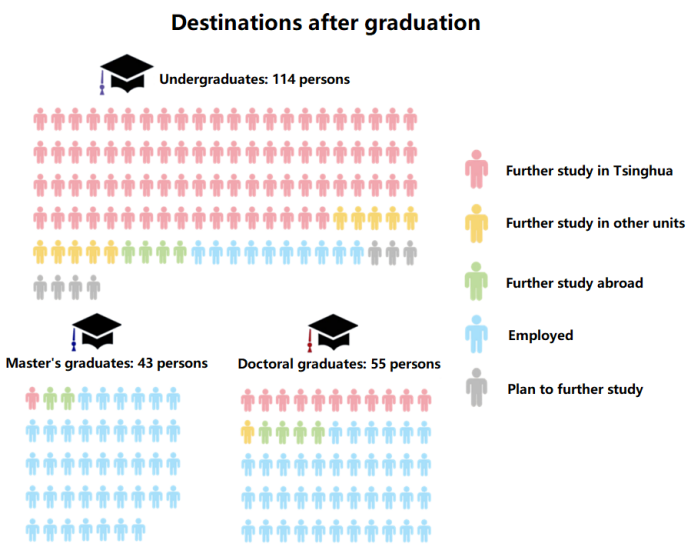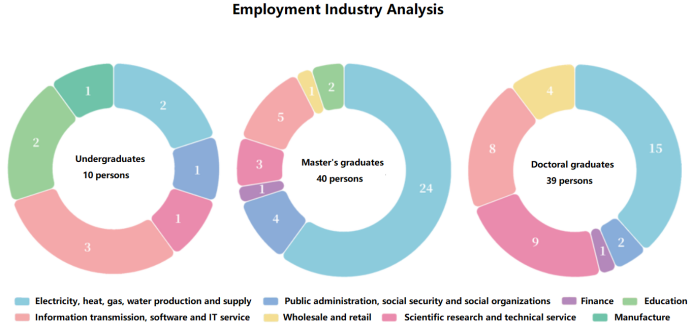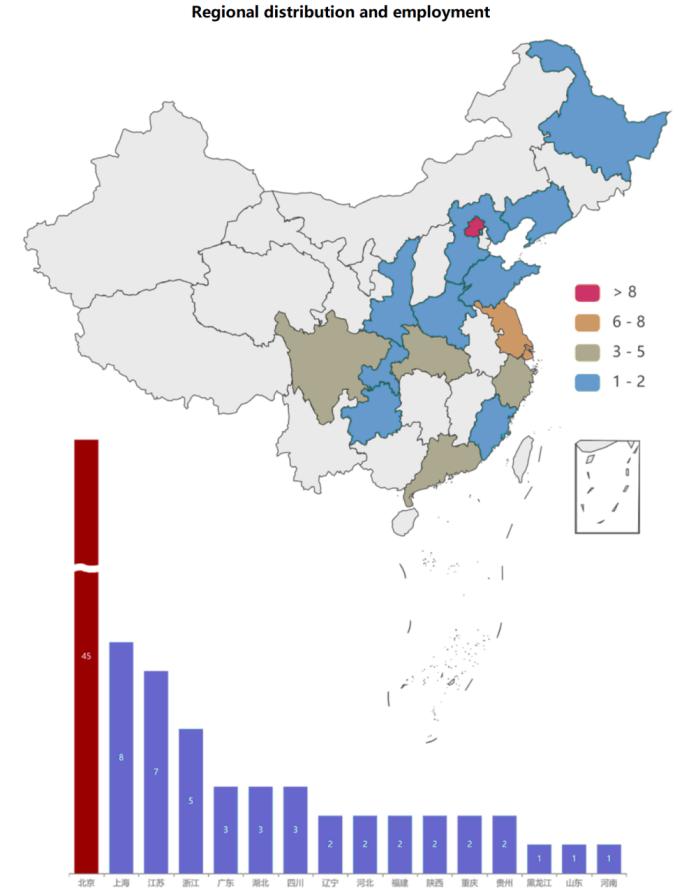Preface
During the 2022-2023 academic year, the Department of Electrical Engineering and Applied Electronics (EEA) at Tsinghua University deeply studied and implemented Xi Jinping’s Thought on Socialism with Chinese Characteristics for a New Era, resolutely implemented the strategic deployment of talent empowerment in the report of the 19th National Congress of the Communist Party of China, and the important spirit of the 15th Party Congress of Tsinghua University. We regard fostering virtue and nurturing talents as our fundamental task, and consider serving the country as our highest pursuit, aiming to cultivate a new generation of talents who will shoulder the great responsibility of national rejuvenation. We strive to achieve more comprehensive and higher-quality employment, and to cultivate talents for the country’s energy transition and the construction of a new power system dominated by new energy. EEA overcame the adverse effects of the pandemic in 2022 on autumn recruitment and completed various employment guidance and career counseling work with high quality.
A total of 232 students graduated from EEA in January, April, June, August, and October in 2023, including 115 undergraduates, 53 master’s graduates, and 64 doctoral graduates.
Excluding 1 international undergraduate student, 10 part-time master’s students, and 9 part-time doctoral students, there are a total of 212 students graduated from EEA in 2023 included in the employment statistics (114 undergraduate, 43 master’s and 55 doctoral). Among them, 116 students continue their studies, 89 are employed, and 7 plan to continue their studies. The employment rate of master’s graduates is 100%, and the employment rate of undergraduates is 93.9% (7 plan to continue their studies and have not yet been employed). How do graduates of EEA choose their careers? What are the characteristics of their regional destinations? This article will take you through the details!
PART 01: Destination Situation

Detailed Report
Among the 114 undergraduates, 97 continued their studies, 10 were employed, and 7 plan to continue their studies, with a continuation rate of 85.1%. Among them, 82 stayed at the university to continue their studies, while 11 graduates went to other domestic electrical engineering schools, and 4 chose to study abroad.
Among the 43 master’s graduates, 40 were employed and 3 continued their studies. One continued their studies at Tsinghua University, and two studied abroad.
Among the 55 doctoral graduates, 39 were employed and 16 continued their studies. Twelve chose to work as postdoctoral researchers in China, among which 11 continued their postdoctoral research at Tsinghua University, and 4 went abroad for postdoctoral research.
All master’s and doctoral graduates were employed or continued their studies, with a graduate employment rate of 100%.
PART 02: Employment Industry Analysis

Report Analysis
Among the 89 graduates of EEA employed in 2023, according to industry classification standards, electricity, heat, gas, and water production and supply industry remain the main choice for graduates of EEA, accounting for 46.1%, reflecting the mainstream willingness of graduates to engage in the development of the national economy and serve the industry with their professional knowledge.
Industry |
Destination |
Electricity and electrical 53 persons |
Power grid companies 24 persons |
State grid/Southern Power Grid and subsidiaries 3 persons |
Regional and provincial electricity companies 15 persons |
District and municipal power supply bureaus 6 persons |
Power generation companies 7 persons |
Electricity, electronic and electrical manufacture companies 6 persons |
Research institutes 16 persons |
Others 36 persons |
Governmental agencies 7 persons |
Educational institutions 8 persons |
Electronic and information industry 16 persons |
Financial units 2 persons |
Non-electricity/electrical research units 3 persons |
Report Analysis
According to the actual industry analysis, among the 2023 graduates of EEA, a total of 53 went to the electricity/electrical industry, accounting for 59.6% of the total employment, and their employers are distributed across various subfields such as power grid, power generation, equipment manufacturing, and technical research. In addition to employment in the electricity/electrical industry, 16 went to the electronics/information industry, 7 to government agencies, 2 to the financial industry, and 3 to non-electricity/electrical industry research institutes; 8 entered the education industry, with 6 going to universities to engage in teaching and research work.
Report Analysis
In terms of the number of graduates employed by a single employer, China Electric Power Planning & Engineering Institute has a total of 5 graduates who signed employment contracts; China Huaneng Group Co., Ltd., State Grid Beijing Electric Power Company, State Grid Shanghai Electric Power Company, State Grid Suzhou Power Supply Company, and Beijing Sifang Automation Co., Ltd. each have 3 graduates who signed employment contracts.
PART 03: Regional Employment Analysis

Report Analysis
The employment destinations of graduates of EEA in 2023 cover 16 provinces and cities across the country, with 44 graduates working in Beijing, accounting for 49.4% of the total employment. Among them, the largest numbers of graduates are employed in Shanghai and Jiangsu Province, accounting for 9.0% and 7.9% of the total employment, respectively. In addition, there are also a considerable number of graduates employed in Zhejiang Province, Guangdong Province, Hubei Province, and Sichuan Province. A total of 24 graduates are employed in their home provinces, accounting for 27.0% of the total employed graduates. In 2023, 17 graduates of EEA (19.1% of the employed) responded to the call to “go to the western region, to the grassroots, and to the places where the country needs them most” and went to work in Northeast China and central and western provinces.
Conclusion
The employment rate of the 2023 graduates is 96.7%, with a master’s graduate employment rate of 100% and an undergraduate continuation rate of 85.1%. From the perspective of regional distribution, the vast majority of graduates choose to develop domestically, with the employment rate in Beijing remaining stable at around 50%, and 4.7% of students choosing to study abroad. From the perspective of industry distribution, the employment proportion in the electricity/electrical industry remains at around 60%, still the mainstream destination for graduates, and the distribution of employment within the industry is more balanced, demonstrating the willingness of graduates to contribute to the development of China’s electrical industry and to enter the mainstream stage of employment.
In addition, the proportion of graduates responding to the national call and going to work in Northeast China and central and western provinces or entering the public sector is steadily increasing. They are transferring the energy of EEA to the places where the country needs it most, embodying the patriotism of Tsinghua people.

















 News & Events
News & Events